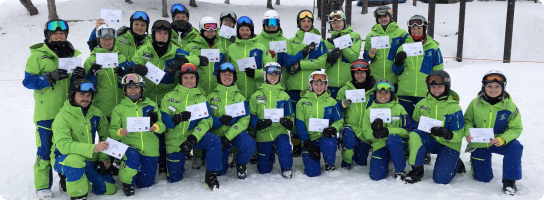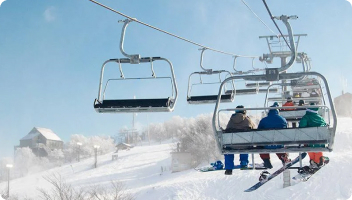Work A Ski Season in Australia
Discover information on working a ski season in Australia and browse jobs.
View jobs
Australian ski resorts run through the mountain ranges to the east of the country and are found in both New South Wales and Victoria. Australian snow seasons are often overlooked and people who have worked at an Australian snowfield often come back several seasons over.
Season Dates
The season runs from mid-June until September, depending on the snow. The season will usually end as a result of the snow having disappeared and later season snow will usually only be on the runs with snow-making capability.
Major Resorts
In Victoria, the three major commercial resorts in order of terrain size are:
- Falls Creek – 450 Hectares (1112 Acres)
- Mt Hotham – 320 Hectares (790 Acres)
- Mt Buller – 300 Hectares (741 Acres)
In New South Wales, the major commercial resorts in order of terrain size are:
- Perisher – 1245 Hectares (3,076 Acres)
- Thredbo – 480 Hectares (1186 Acres)
- Charlotte Pass – 50 Hectares (123 Acres)
In both NSW and Victoria, there are also a number of smaller mountains which cater more to beginners, cross-country skiers and families.
Snow and Weather
Much is made of the Australian snow and how it is not as good as elsewhere in the world. The fact is, the snow can be awesome in Australia when it dumps down. It is true, however, that the snow can be a little unreliable and the terrain can get patchy when it has not snowed for a while.
The snow tends to be wetter and heavier than Europe and North America due to the warmer temperatures. Most days during the season hover around 0c and the snow can be inconsistent as a result; some days can be true powder days, while other days can be icy. White-outs (where you cannot see because of the dense fog) do occur with some frequency.
The best snow in Australia comes in August. The natural snow is fairly similar across the major resorts, although the larger, commercial mountains (listed above) do more snow-making and, as a result, have greater snow coverage.
The mountain bases for all the resorts are close to the snowline as the resorts are not as high as resorts in Europe and North America.
Terrain at Australian Resorts
You will find that the amount of accessible terrain is much less than in Europe and North America. The lifts are generally shorter and the runs also shorter.
However, the terrain that is available is still quite good and you can have some excellent days riding in Australia. Mt Hotham in Victoria probably has the best selection of steep terrain, with Thredbo also having some good, steeper terrain.
Perisher is the largest resort in Australia. It has over 45 lifts in total and is comparable to many major resorts around the world in its skiable terrain size, although it is much flatter than Mt Hotham and Thredbo and involves a lot of cat trails to move around.
Backcountry is still not as popular in Australia as in New Zealand, due to the fact that you need a large dump to make it worthwhile. Also, more Australian skiers are once or twice a year riders and don’t tend to want to go into the backcountry as much.
Living at an Australian Ski Resort
The major Victorian resorts are at the top of windy roads from the base of their respective mountains, while the major NSW resorts are connected from Jindabyne, the village at the base, by a slightly easier, straighter road which is nonetheless still windy.
This is unlike the highways that connect US, Canadian and European resorts and it means most towns are self-contained. You will very likely not leave the village often during the season.
Buses are difficult to use around the alpine area. Having access to a car will allow you much more freedom to explore the other resorts in Victoria or New South Wales on your days off.
Finding a Job
Working Directly for the Mountain Resort / Working at a Local Business
Australian resorts hire both Australians and foreigners, unlike many mountains in Europe, Japan and South America which will only hire locals. As a result, you can apply for jobs with the resort (lift operator, mountain operations etc.) as well as with the local businesses in town.
The mountains will usually do their job applications on-line, whereas many of the businesses in towns will accept walk up applicants with a CV.
Pay Rates
Work at Australian ski resorts is governed by the Alpine Resorts Award 2010 which dictates minimum pay rates for those in the snow industry. For entry level jobs, seasonal rates are $AUD18.82 an hour. For the lowest instructing level, the pay rate is $AUD19.38 for seasonal workers. See www.fwc.gov.au/documents/modern_awards/award/ma000092/default.htm for more information.
Information for Ski and Snowboard Instructors
The central body dealing with ski and snowboard instructors is the Australian Professional Snowsports Instructors. www.apsi.net.au
Email: [email protected]
Post: PO Box 131 Jindabyne, NSW 2627.
Phone: +61 2 64561255
International applicants with foreign instructing certificates may wish to contact the association to convert their foreign instructing certificate or see whether it is recognized in Australia. Alternatively, you may contact individual mountains to see if they will recognize your international certificate.
Tax File Number and Superannuation
Before you start work at an Australian ski resort, you will need to obtain a tax file number. To get a tax file number, go to the Australian Tax Office website:
www.ato.gov.au/Individuals/Tax-file-number/Apply-for-a-TFN/
All employers in Australia are required to pay superannuation. This is an additional payment, based on a percentage of your salary, which is for paid directly into a superannuation account for the purposes of retirement.
These payments currently stand at 9.5% of your salary. All international employees must hold a superannuation account (usually set up by the employer), and you are entitled to withdraw the money when you leave Australia.
Paying Tax
Pay will be deducted from your salary each pay cheque.
If you are a resident in Australia, there is a tax free threshold meaning that if you earn less than a certain amount for the year you won’t pay any tax. However, tax is still taken out of your pay at 19% as the tax office assumes you would earn more than the threshold if you worked full-time during the entire year.
If you are a non-resident and on a working holiday visa, you don’t get the benefit of the tax-free threshold. You will pay 15% tax on all your earnings.
See Getting Your Tax Back for information on how to claim back your tax after the end of the season.
Visas
Working Holiday Visa / Work and Holiday Visa
Australia has working holiday visa programs with many countries, making it fairly simple to apply for jobs if you are coming from overseas. If you are from the UK and Canada, for example, the visa process will take about 45 minutes to obtain a visa.
There are two working holiday programs available to foreign passport holders. The working holiday visa program and the work and holiday visa program. The major difference between the two is that only the working holiday visa program can be extended for a second year. There is no quota on either of these programs so you can apply whenever you want during the year.
Both these visas allow foreign passport holders to:
- stay in Australia for up to 12 months
- work for up to six months in Australia with each employer
- study for up to four month
- leave and re-enter Australia any number of times while the visa remains valid
To be eligible, you must
- be at least 18 years of age but under 31 years of age
- not have a dependent child accompanying you at any time during your time in Australia
- be a passport holder of one of the countries below
- show that you have access to around $5,000
For those applying under the work and holiday visa program, additional requirements include
- meet the educational requirements (At least two years of undergraduate university study for most countries except the US which requires only secondary education)
- functional English (there are various ways to prove this)
- have a letter of support from your home government (except the US)
The working holiday visa program is available to passport holders from Belgium, Canada, the Republic of Cyprus, Denmark, Estonia, Finland, France, Germany, Hong Kong SAR, the Republic of Ireland, Italy, Japan, the Republic of Korea, Malta, the Netherlands, Norway, Sweden, Taiwan and the United Kingdom.
The work and holiday visa program is available to passport holders from Argentina, Bangladesh, Chile, Indonesia, Malaysia, Poland, Portugal, Spain, Thailand, Turkey, USA, Uruguay.
How to apply
For the working holiday visa (subclass 417), head to www.homeaffairs.gov.au/trav/visa-1/417-
For the work and holiday visa (subclass 462), head to www.homeaffairs.gov.au/trav/visa-1/462-
The cost for the visa is currently $440. The working holiday visa has an additional $80 charge if you don’t apply over the internet but rather in person.
Extension of the working holiday visa – second year
Those eligible for the working holiday visa are able to extend their visa for a second year if you work in the ‘agricultural industry’ for 3 months in ‘regional Australia’. If you do this work, you will be able to work another 6 months with a company for which you have previously worked.
Working in the ‘agricultural industry’ essentially means picking fruit or working on a farm. This work is usually unpaid with only food and accommodation provided.
Be wary of certain farms that use the program as nothing more than a way to obtain cheap labour from foreigners. While some farms can provide a great experience, many will not provide very good food or accommodation and will not be overly friendly. Word of mouth from other travellers is useful to determine the good farms from the bad.
Unfortunately, working at a ski resort in Australia does not count as a ‘regional Australia’ job allowing you to extend your visa.
Extension of the working holiday visa – third year
As a result of legislative changes recently enacted (with effect from 1 July 2019), a third year working holiday visa will also be available, thereby potentially granting you an overall stay period of 3 years in Australia as a working holiday visa holder.
You will need to demonstrate that you have completed an additional 6 months of specified work in a designated area of regional Australia during the period when you held your second year working holiday visa (or an eligible Bridging Visa). The specified work must have been carried out on or after 1 July 2019.
You must also either currently, or previously, have been in Australia as the holder of a second year working holiday visa. Additionally, you must have complied with your second year working holiday visa conditions (the same as for a first year working holiday visa, as noted above). Be aware that you may only qualify for a third year working holiday visa from 1st January 2020.
Other Visas
In rare cases, you might also be able to get direct sponsorship from a mountain for a working visa. However, this would only likely be for specialised skills given that a working holiday visa is relatively straightforward to obtain.
Latest Australian Job Postings
There are currently no jobs listed for this job type.



